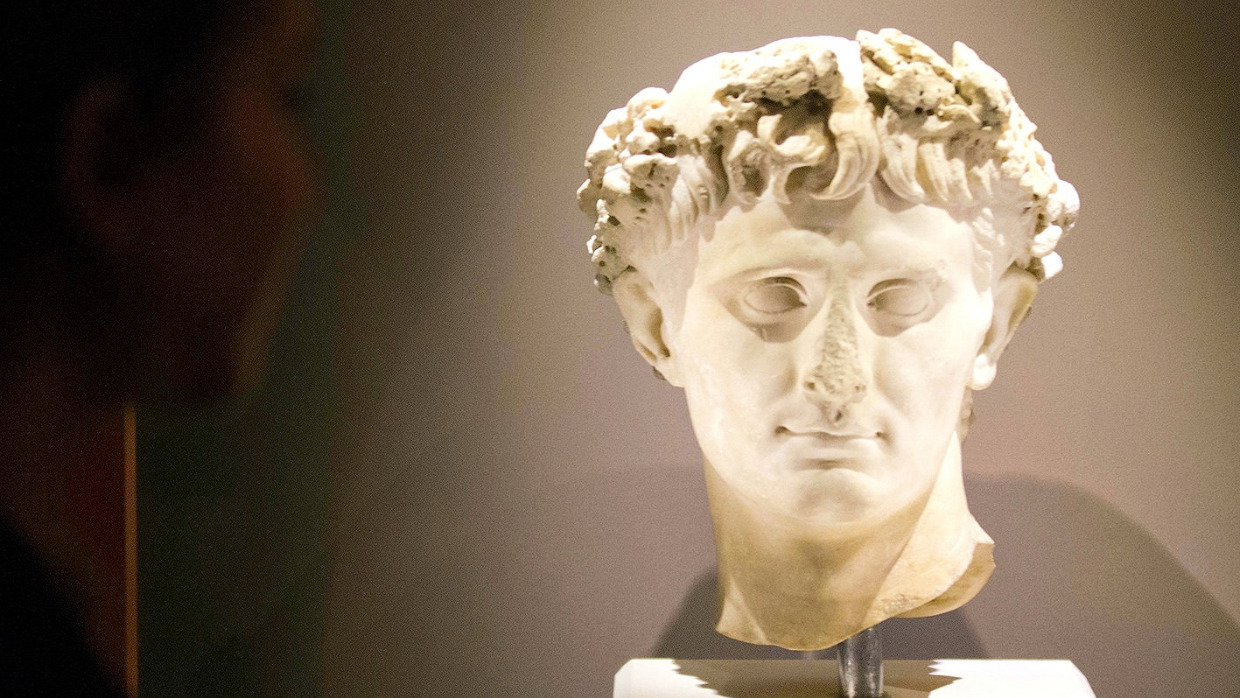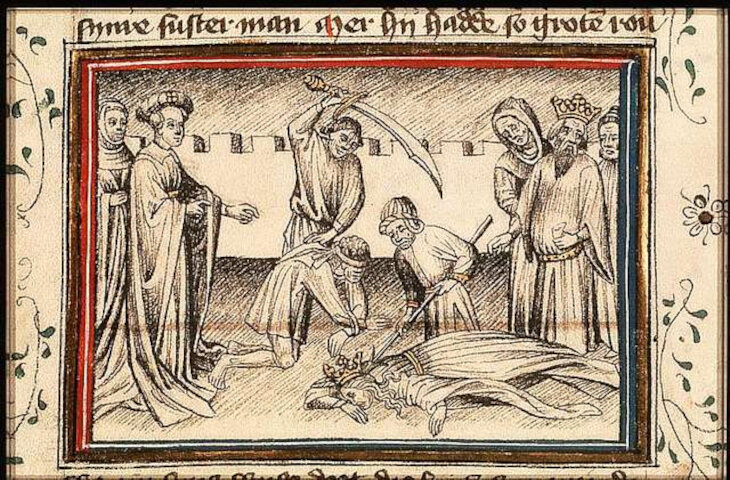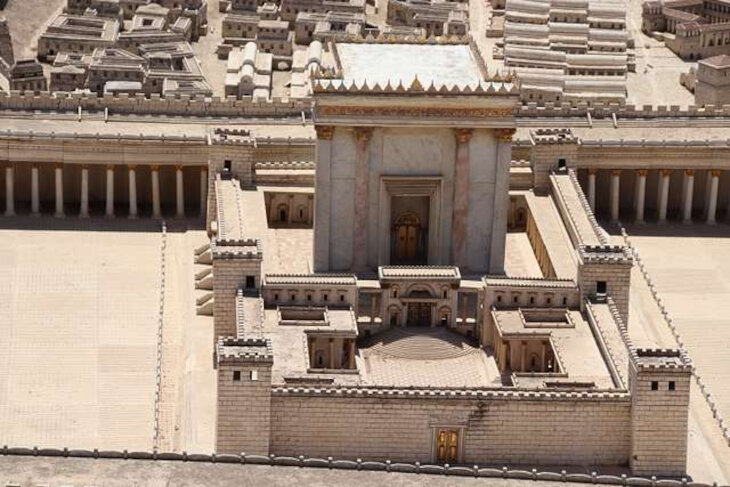 Vampire Weekend's Surprising Jewish Stories
Vampire Weekend's Surprising Jewish Stories


6 min read
Herod was a controversial figure. As king of Judea he reconstructed the Second Temple, but as a puppet of Rome was distrusted by his people.
History is full of people that don’t fit neatly into a coherent narrative. Herod was one of those figures.
The man known as Herod the Great was king of Judea from 37 B.C.E. until his death in 4 B.C.E. His long rein came at pivotal points in both Jewish and Roman history and Herod tried to fit into both worlds.
Herod was born in 73 B.C.E. into a prominent Idumean family. His grandfather, Antipas, was a pagan who converted to Judaism under the Hasmoneans and soon befriended the ruling party. However, Herod was never considered Jewish by rabbinic authorities under Jewish law.
In later years, as the Hasmonean dynasty tore itself apart from internal feuding, Herod’s father Antipater assisted the Roman invasion of Judea. Rome at the time was involved in its own civil war and Antipater shrewdly sided with the victorious Julius Caesar. As a reward, Antipater was given Roman citizenship and appointed as governor of Judea.
Antipater’s son Herod became governor of the Galilee region. Coming from an aristocratic family, Herod grew up with a combination of Hellenistic and Jewish influences.
In 40 B.C.E. the Parthian kingdom invaded Judea and temporarily kicked out the Romans. Rome then proclaimed Herod king of Judea and sent him a large army to retake their province, which he did in 37 B.C.E. To solidify his political power, Herod married into the royal Hasmonean family, marrying a Jewish princess named Miriam. Decades later an increasingly paranoid Herod executed her.
 Depiction of Miriam’s execution.
Depiction of Miriam’s execution.
Evidence of Herod’s relationship with Judaism is found in archaeological records. And there are many from this time. During the Second Temple period, purity and cleanliness were emphasized among the Jewish population.1 Numerous mikvahs, ritual baths one would immerse in to become spiritually pure, were built, especially around Jerusalem. Mikvahs were found in all of Herod’s palaces. A few were smaller private mikvahs designed specifically for the royal family, some perhaps used by Herod himself.
Did Herod keep kosher? Upon hearing that the paranoid king of Judea had executed two of his sons, the Roman emperor Augustus was quoted as saying “It’s better to be Herod’s pig than his son.”2 The dark implication here was that Herod refrained from eating pork.
The royal family imported many exotic foods from the vast Roman Empire. One of the imports was a fermented fish sauce called garum. While the garum recipe was typically made with specific ingredients, Herod’s recipe was unusual, containing only kosher fish.3 This revealed a level of Jewish observance he adhered to.
In contrast to his eating habits, however, Herod imported many non-kosher wines. This list included wines forbidden by religious authorities. Whether he drank them or not is unknown. It’s more likely that Herod decided on the level of kosher based on his audiences, not due to any level of religious observance.
Herod’s art collection was generally in sync with Jewish law. Similar to the Hasmonean rulers before him, Herod’s palaces were decorated with abstract drawings, refraining from portraying sculptures or mosaics representing human or animal figures. This was based on Jewish laws against creating objects that could be used for idol worship. However, one of Herod’s palaces did contain a drawing of a sea battle depicting soldiers fighting.
Yet Herod’s most memorable display of his Judaism was the extensive and costly renovations to the Second Temple in Jerusalem. The Talmud states, “He who has not seen Herod’s building, has never in his life seen a truly grand building.”4
 Model of Portion of Second Temple
Model of Portion of Second Temple
In fact, the Temple building project was so vast it remained unfinished when the Temple was destroyed by the Romans in 70 C.E. The transformation of the Temple emphasized Herod’s kinship to his Jewish heritage. It’s significant that Josephus wrote that in deference, Herod refrained from ever entering the Temple ground, as he was not a priest.5
Another reason for the massive construction project was likely due to Herod’s ego and his desire to expand the Temple to a size that earlier generations only dreamed of, making it the envy of the ancient world.
 King Herod is carried off by servants in a 17th-century German engraving.
King Herod is carried off by servants in a 17th-century German engraving.
However, there were also the practical aspects to the Temple program. One reason for expansion was to accommodate the increasing numbers of pilgrims flocking to Jerusalem from around the empire during major festivals.
There were many areas where Herod deviated from Judaism. Herod built and dedicated smaller pagan temples honoring his Roman patrons in parts of Judea, particularly in areas that had large non-Jewish populations. He also added theaters and gymnasia, making these regions more Hellenistic then Jewish.
Towards the end of his life, Herod ordered a large golden eagle statue to be placed in Jerusalem at the main gate leading to the Temple, in order to honor Rome. The act was met with great resistance, most who viewed the foreign object as idol worship. The ancient writer Josephus relates that a group of men organized and pulled down the statue.6
 Painting of Herod the Great
Painting of Herod the Great
Herod gathered Jewish leaders to his palace and lectured them about his anger at the mob’s action. He burned alive those arrested. The Talmud relates how Herod slaughtered most of the sages in his anger and considers him an evil person.
This was not the first time Herod had meddled with the running of the Temple. Herod had once appointed his wife Miriam’s brother Aristobulus to the position of High Priest. However, as Aristobulus became increasingly popular in the role, Herod ordered him murdered.
Herod killed thousands during his long reign, including many of his own family. Herod’s long reign did not buffer tensions between the Roman Empire and Judea. Frictions increased until it exploded into a devastating war less than a century later. The first Roman-Jewish war took place between 66-70 C.E. Hundreds of thousands of Jews were killed or enslaved from this conflict. The Holy Temple and much of Jerusalem were destroyed. The slaves from Judea the and spoils from the Temple were paraded through Rome in celebration. Both would be used to build the Roman Colosseum, a building dedicated to deadly competition.

The painting captured such evil in his eyes.
Note, Idumean=Edomite, descendants of Jacob's brother Esau. Recently I read that Nabeteans (from Petra) are originally from...YEMEN! Some scholars claim Edomites are Nabeteans (Herod' mother was Nabatean) which does NOT fit w/Jewish history. ROME is called EDOM, yet Herod does not seem to have their sensibility. Edomites married GREEKS in Israel & then moved to Greece & later to ROME to form the beginning of the Roman Empire. Maybe the intermarriage of Edomites & Greeks created a new outlook that was less tribal than Edomites & less philosophical than Greeks, forming pragmatic Romans. Tractate Baba Bathra states Herod was a SLAVE & slaves of Jews had to keep the same Torah commandments that Jewish women did, so he'd have been familiar with Jewish observance to a degree.
Excellent!
Being a Christian, it's interesting to read the Jewish perspective of the character in our shared histories.
No reference is made to "the slaughter of the innocents" that was the mass murder of little Jewish boys in the town of Bethlehem some time after the birth of Jesus. This may be because there is not sufficient evidence that it happened.